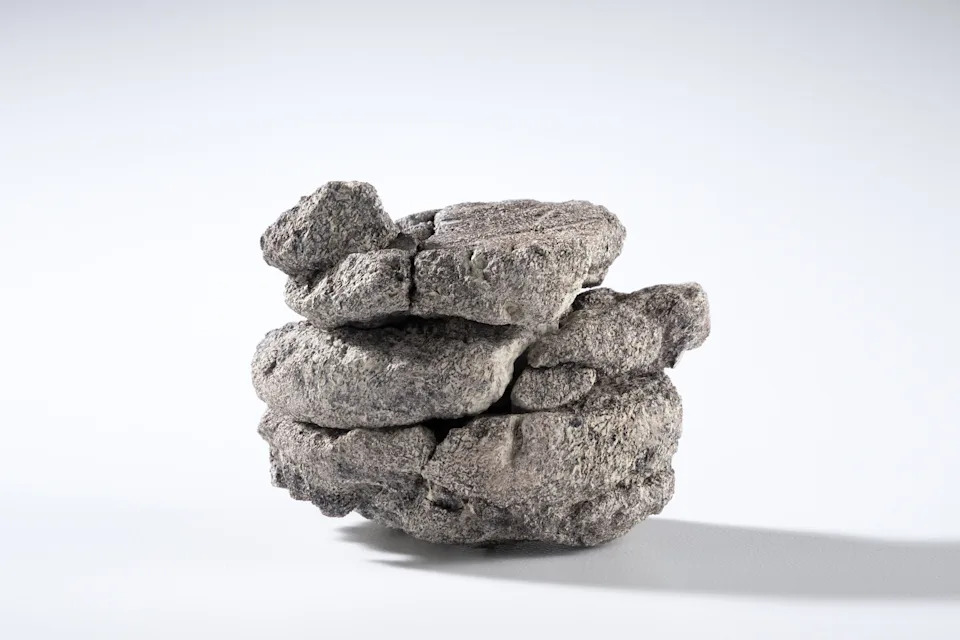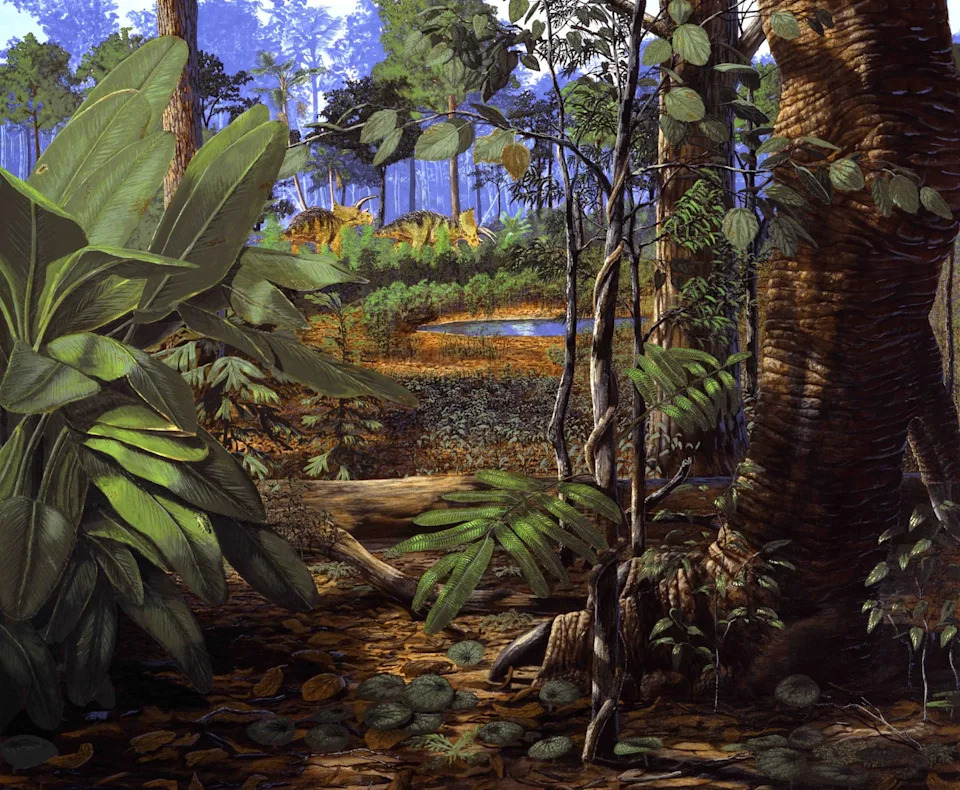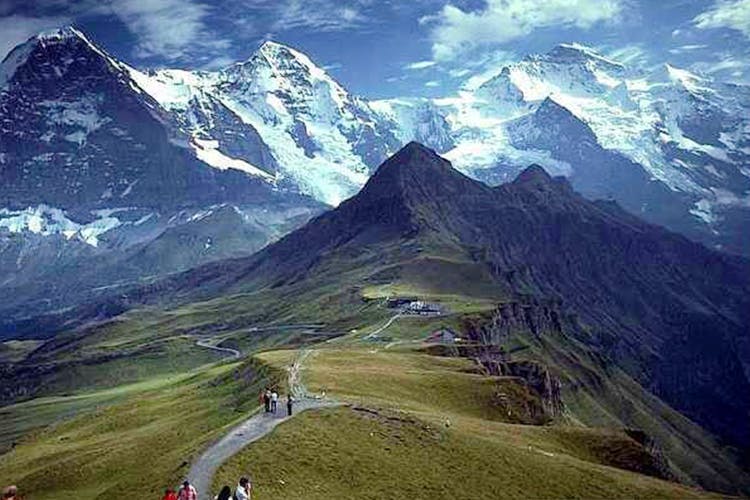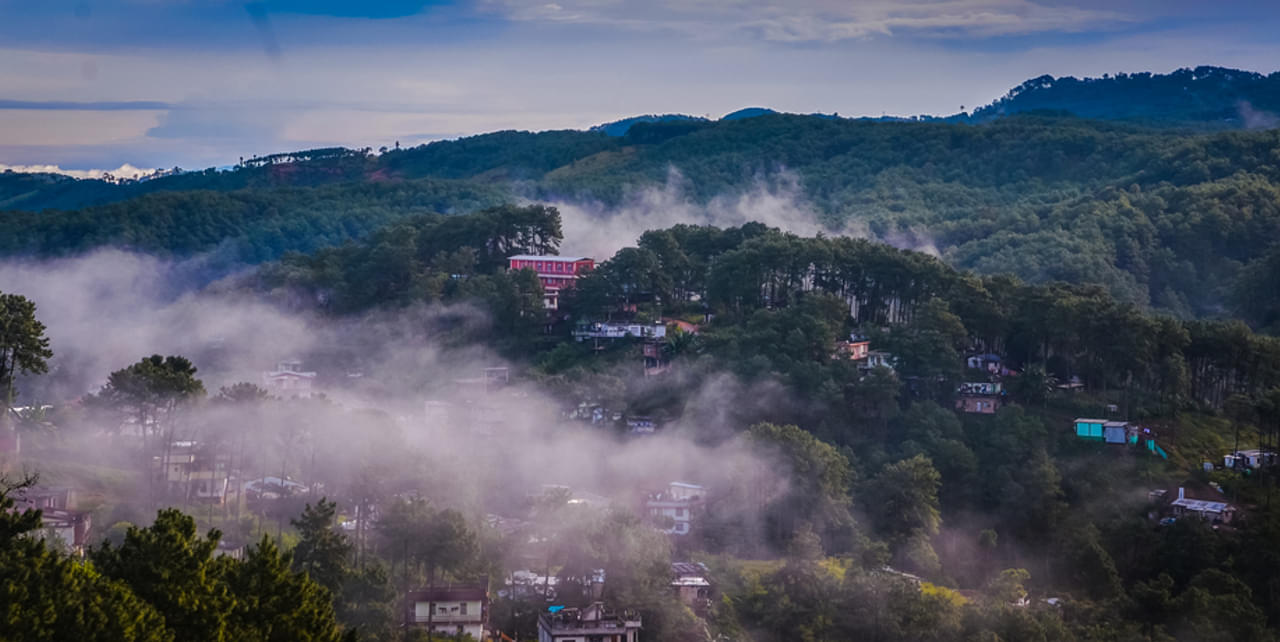The Denver Museum of Nature & Science already houses a vast trove of dinosaur bones, but it recently received an unexpected addition to the collection. The latest fossil didn’t come from a generous benefactor or anonymous donor–it came from beneath the museum’s own parking lot.
“This may be the most unusual dinosaur discovery I have ever been a part of,” DMNS director of Earth and Space Sciences Patrick O’Connor said in a statement.
The find happened in January, when the museum began a drilling project to assess the possibility of switchingfrom natural gas to geothermal energy. The test also offered an opportunity for researchers to simultaneously oversee a scientific coring initiative to better understand the Denver Basin’s geology. To do so, a pair of drill rigs each bored a one-foot-wide hole into the ground that the team then used to extract samples. But about 763 feet below the blacktop, geologists found more than just sediment deposited by the South Platte River—they discovered a pair of bone fragments.
 A portion of the dinosaur bone recovered from the scientific core—drilled 763 feet below the surface of the Museum’s parking lot in City Park. It has been identified by Museum paleontologists as the deepest and oldest dinosaur fossil ever found within the city limits. Specimen is housed at the Denver Museum of Nature & Science, courtesy of History Colorado, Office of the State Archaeologist. Credit: Rick Wicker Wicker; Richard M.
A portion of the dinosaur bone recovered from the scientific core—drilled 763 feet below the surface of the Museum’s parking lot in City Park. It has been identified by Museum paleontologists as the deepest and oldest dinosaur fossil ever found within the city limits. Specimen is housed at the Denver Museum of Nature & Science, courtesy of History Colorado, Office of the State Archaeologist. Credit: Rick Wicker Wicker; Richard M.“It’s basically like winning the lottery and getting struck by lightning on the same day,” DMNS curator of geology James Hagadorn said in an interview. “No one could have predicted that this little square foot of land where we started drilling would actually contain a dinosaur bone beneath it.”
The larger of the two fossils unfortunately didn’t survive its encounter with diggers’ drill bit. But before fragmenting, the bone measured about 1.9 inches long, 2.3 inches wide, and 2.3 inches tall. A subsequent analysis published in the journal Rocky Mountain Geology indicated the vertebra belonged to an herbivore similar to a Thescelosaurus or Edmontosaurus.
At 67.5 million years old, it is the oldest and deepest dinosaur fossil ever discovered in Denver, offering a window into the region right before the Cretaceous-Tertiary mass extinction event. As the DMNS explains in its accompanying profile, Denver looked vastly different during the Cretaceous than it does today. Instead of snowy mountains, tropical rainforests and swampy lowland floodplains covered Colorado with dinosaurs like the Tyrannosaurus rex roaming around.
 A reconstruction of a clearing in a warm, rainy, tropical forest like ones that likely dotted parts of the Denver area during the latest Cretaceous Period, about 67 million years ago. In between the palm trees, climbing vines and ginger plants, this ecosystem was inhabited by several large animals, including plant-eating dinosaurs like Triceratops in the background and meat-eating animals like the Tyrannosaurus rex, whose leg is in the foreground. Credit: Gary Stabb, Johnson and Raynolds
A reconstruction of a clearing in a warm, rainy, tropical forest like ones that likely dotted parts of the Denver area during the latest Cretaceous Period, about 67 million years ago. In between the palm trees, climbing vines and ginger plants, this ecosystem was inhabited by several large animals, including plant-eating dinosaurs like Triceratops in the background and meat-eating animals like the Tyrannosaurus rex, whose leg is in the foreground. Credit: Gary Stabb, Johnson and Raynolds“In my 35 years at the museum, we’ve never had an opportunity quite like this—to study the deep geologic layers beneath our feet with such precision,” DMNS Earth Sciences research associate Bob Raynolds said. “That this fossil turned up here… is nothing short of magical.”
It remains to be seen if the museum will eventually make the shift to geothermal energy. In the meantime, visitors can see the unexpected discovery on display as part of a temporary exhibit.














